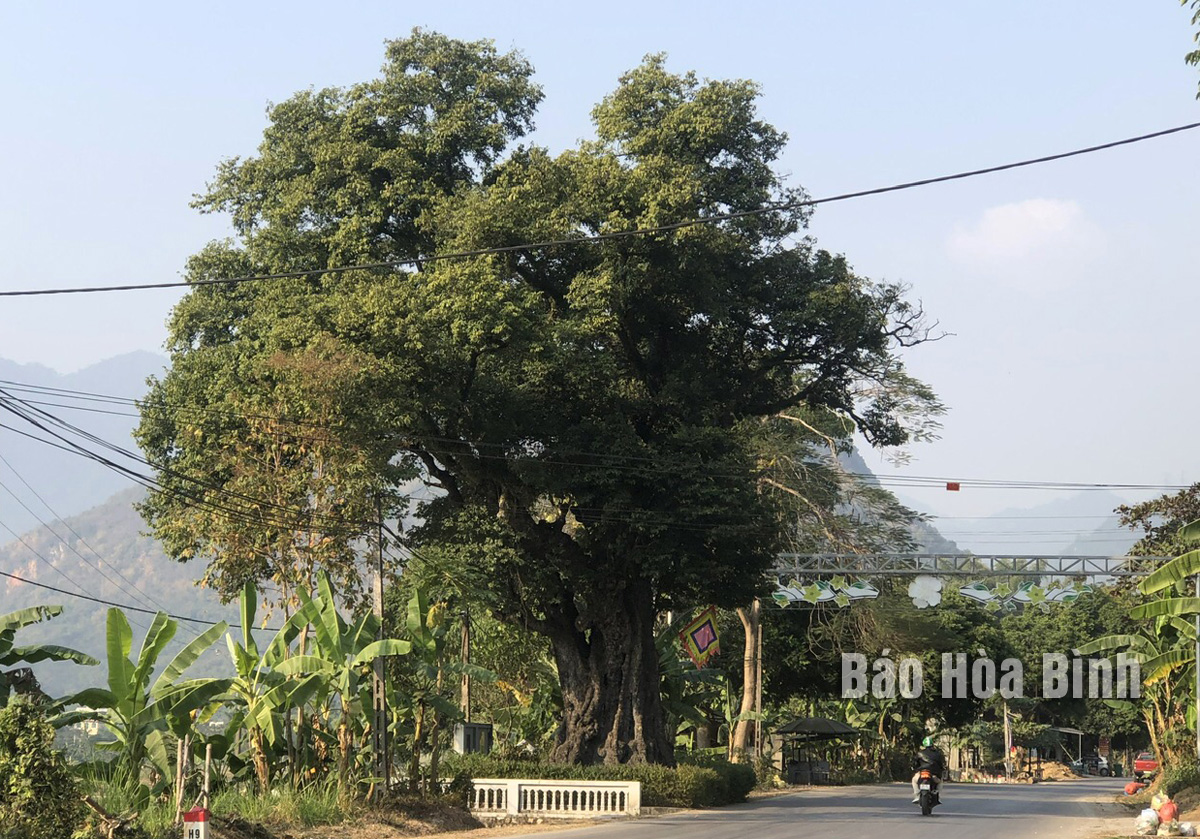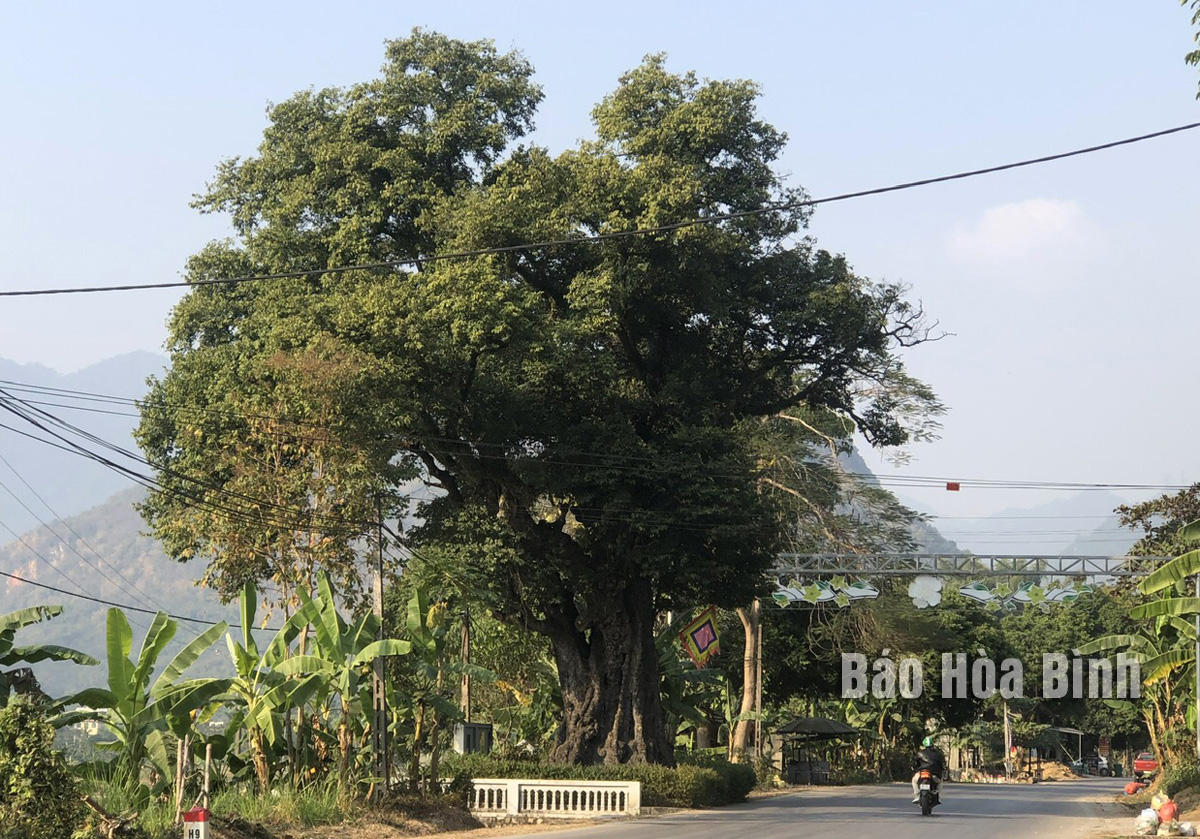
Authorities and residents of Chieng Chau commune, Mai Chau district, are making efforts to preserve and promote the historical value of a centuries-old gold apple tree (scientifically known as diospyros decandra lour), which has been recognised as a national heritage tree.

The gold apple tree in Mo hamlet, Chieng Chau commune, is regarded as a
"living witness" to the ups and downs of Mai Chau's history.
Located
in Mo Hamlet, the tree has stood through centuries of history, from executions
in legendary battles to massacres under French colonial rule. During wartime,
it provided shelter for guerrilla forces, withstanding heavy bombing and
remaining resilient to this day.
Recognised
as a Vietnamese heritage tree in 2016, it stands as a symbol of resilience and
cultural pride for the local community.
Ha
Thi Yen, Secretary of the Party cell of Mo hamlet, highlighted the recognition
as an important step in preserving cultural identity and passing down
historical awareness to future generations.
Authorities
in Chieng Chau commune have also incorporated the tree into local tourism
development plans.
Ha
Van Tiep, Chairman of the commune People's Committee, noted plans to integrate
the site with other attractions like Lac hamlet and Pieng Kem Cave, aiming to
showcase both the area's natural beauty and historical significance.
The
preservation of the heritage tree is part of broader efforts to maintain
cultural heritage and promote spiritual tourism in the region.
With an increasingly vibrant and widespread emulation movement aimed at building cultured residential areas and cultured families, Yen Thuy District has been making steady progress toward improving both the material and spiritual well-being of its people, while fostering a civilized, prosperous, beautiful, and progressive community.
Once lacking recreational spaces and community facilities, Residential Group 2 in Quynh Lam Ward (Hoa Binh City) has recently received attention for the construction of a new, spacious, and fully equipped cultural house. The project followed the model of state support combined with public contributions in both labor and funding.
The "All people unite to build cultural life" movement, which has been effectively integrated with Kim Boi district’s socio-economic development goals, is fostering a lively spirit of emulation across local residential areas, hamlets, villages, public agencies, and enterprises. In addition, through the initiative, traditional cultural values are being preserved and promoted, while community solidarity and mutual support in poverty reduction and economic development are being strengthened.
A working delegation of the Hoa Binh provincial People’s Committee led by its Permanent Vice Chairman Nguyen Van Toan on June 11 inspected the progress of a project to build the Mo Muong Cultural Heritage Conservation Space linked to tourism services in Hop Phong commune, Cao Phong district.
Born and growing in the heroic land of Muong Dong, Dinh Thi Kieu Dung, a resident in Bo town of Kim Boi district, in her childhood was nurtured by the sweet lullabies of her grandmother and mother. These melodies deeply imprinted on her soul, becoming an inseparable part of her love for her ethnic group's culture. For over 20 years, this love for her hometown has driven Dung to research, collect, and pass down the cultural values of the Muong people to future generations.
In the final days of May, the Ethnic Art Troupe of Hoa Binh Province organized performances to serve the people in remote, mountainous, and particularly disadvantaged areas within the province. These were not just ordinary artistic shows, but they were the meaningful journeys aimed at spreading cultural values, enhancing the spiritual life of the people and contributing to the preservation of ethnic minority cultural identities.



